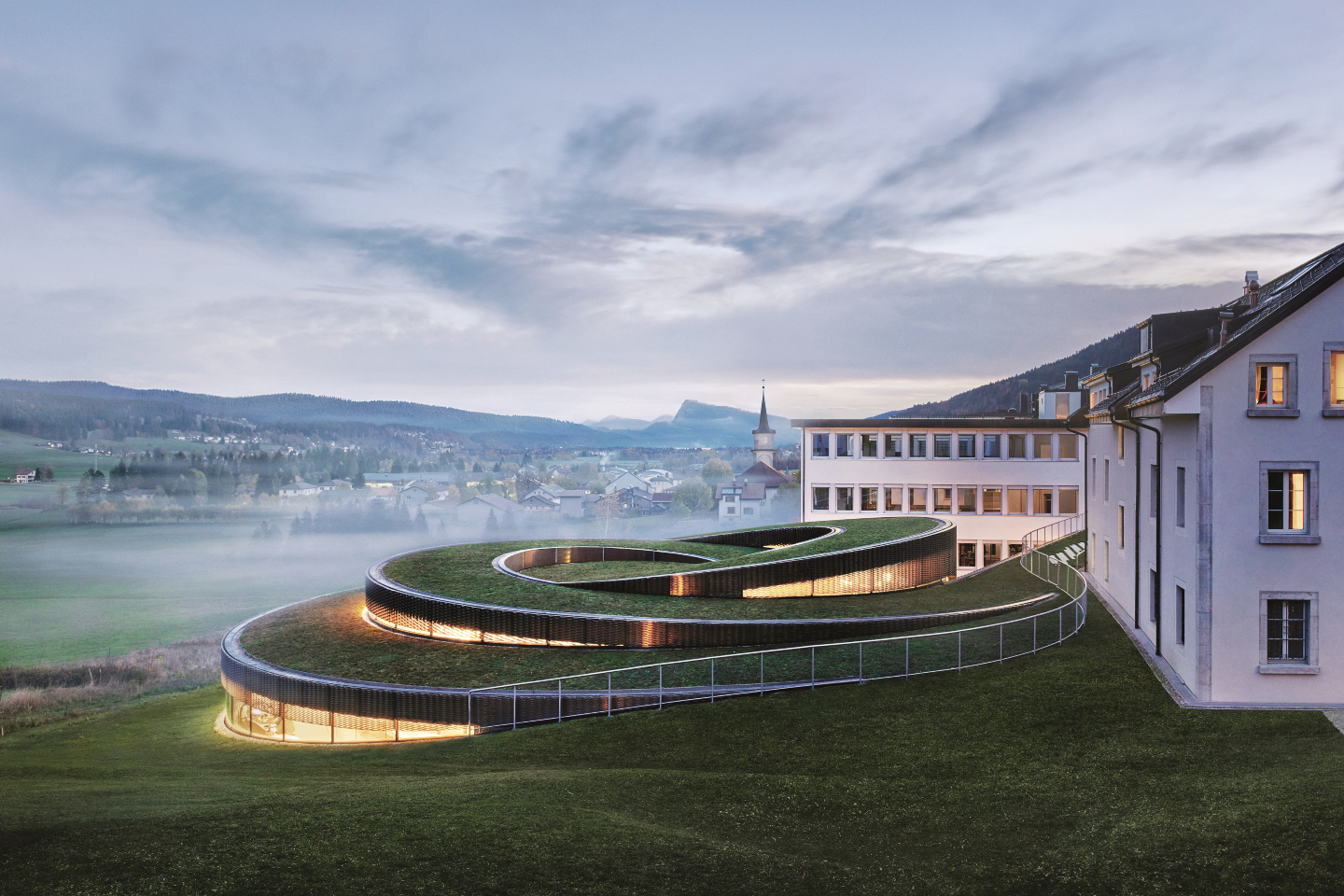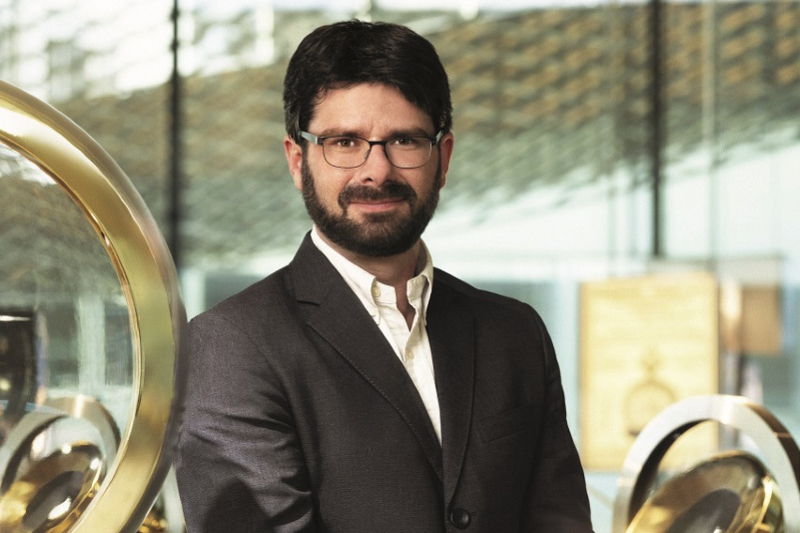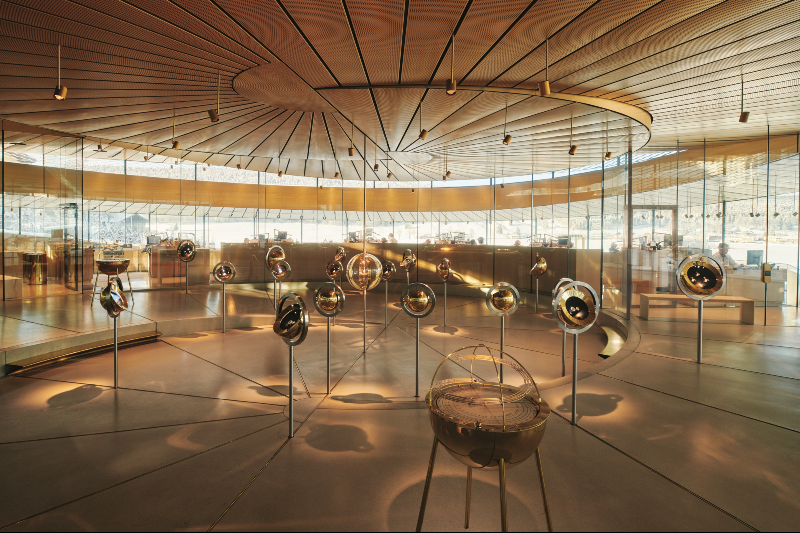
Designed to complement the historic main building, the museum reflects the undulating landscapes of the Vallée de Joux (All photos: Musée Atelier Audemars Piguet)
As art and cultural institutions around the world slowly reopen, the launch of a new museum, particularly in a quiet countryside village, is intriguing.
“I hope we can bring you here for a visit soon,” Sebastian Vivas, heritage and museum director of Swiss watch manufacturer Audemars Piguet (AP) and the man charged with bringing the Musée Atelier Audemars Piguet to life, tells Options.
It is wishful thinking on our end for now, but one can see why Vivas is eager. The stunning private museum, which took seven years to complete, is an ambitious undertaking both in terms of architecture and engineering as well as its daring vision.
When the historian first joined AP at the start of planning the museum, Jasmine Audemars, great-granddaughter of Jules Louis Audemars and chairwoman of AP’s board of directors, told him that the idea of building a standalone museum in the village of Le Brassus, situated 1,000m above sea level within the mountainous Vallée de Joux (Jura Mountains) in Switzerland, was “completely crazy”.
musee_atelier_2020_sebastian_vivas_jpeg.jpg

Vivas later realised the remark carried a sense of anticipation, not trepidation. It is a special go-getting spirit, he says.
But the honest question is, how compelling can a brand-story museum be? To Vivas — who fell in love with professional watchmaking by chance when he came across the 100,000-page Journal Suisse d’Horlogerie that not only highlighted the development of mechanisms but also the ecosystem that created an industry — the fascination lies not merely in AP’s rich history but also “the miracle” that is Swiss watchmaking.
“As a historian, we know that industries develop in cities — industrialisation is closely linked to the enlargement and growth of urban cities. So, to me, it’s something quite extraordinary that mostly small villages made up of cow farmers could build such an industry, that these craftsmen could be so innovative and somehow export these marvels of technique to the world. That’s why we want to share this story,” he says.
Even if one is not a mechanical watch aficionado, an immersion into the Swiss watch experience is quite unlike any other. One would be hard-pressed not to at least admire the fervent passion and dedication to minute details that have inspired such miniature masterpieces.
And the Musée Atelier aims to display more than just historical anecdotes and framed timepieces, though there are plenty of those, about 300 to be exact. “I would call it a living museum,” says Vivas. “We curated the narrative in such a way, like a storyboard, that not only conveys the message and emotions we want to share, but also to allow both the visitor who doesn’t know anything about watchmaking and the most knowledgeable collector to enjoy it.”
musee_atelier_interieur_le_brassus_2020_09_original.jpg

The gallery is now open to the public via registration on its dedicated website; it used to be by invitation only at the old gallery. Visitors are brought on a guided tour through the brand’s history, origins of watchmaking in the Vallée de Joux, the fundamentals of what makes a mechanical watch and AP’s accomplishments in that regard.
“Of course, the last part of the tour is dedicated to the Royal Oak,” Vivas reveals, referring to the brand’s most iconic watch. “We have over 100 Royal Oaks exhibited in the museum.”
But possibly the best reason to visit the museum is the workshop tour, during which one can not only watch the craftsmen and watchmakers at work as part of the visiting experience but also to appreciate the watchmaking process first-hand. “They can try putting on the screws and decorating a movement or a watch case. We have the workshops placed within the museum, to enable people to play with and touch the different movements and complications, to enjoy the beauty of the techniques, the sounds and functionalities,” shares Vivas.
There is also a space dedicated to collaborative projects and temporary exhibitions, which is arguably a most exciting addition for a manufacturer known for its artistic collaborations. To start, the team will be exhibiting the making-of process of creating the museum.
architecture_carrousel01_photo02_1146x750.jpg.transform.apcarouselh.jpg

That leads us to the first impression of the Musée Atelier — its distinctive architecture. Vivas often repeated words such as “connecting” and “bridging” when articulating the brand’s story and vision. The Musée Atelier’s futuristic spiral design adds to this narrative.
Its design was chosen from a competition, ultimately won by German architectural firm Atelier Brückner. Many assume that the unique spiral pavilion draws inspiration from a watchmaking part, but the brief was only to create something elegant and sophisticated, while being respectful of the adjacent older building of AP.
Standing alongside the rectangular-shaped historical building, the visual contrast encapsulates a story that straddles past, present and future; of tradition and innovation; technique and savoir faire, of sophistication and embracing the fundamentals. “The museum expresses our deep roots, in a way, and our forward thinking on the other hand,” Vivas highlights.
“The form also pays tribute to the undulating slopes of the surrounding environment. It’s a very clever shape, it just makes sense, like a watch — every detail is complex, functional and beautiful at the same time.”
Book your visit here.
This article first appeared on June 22, 2020 in The Edge Malaysia.


